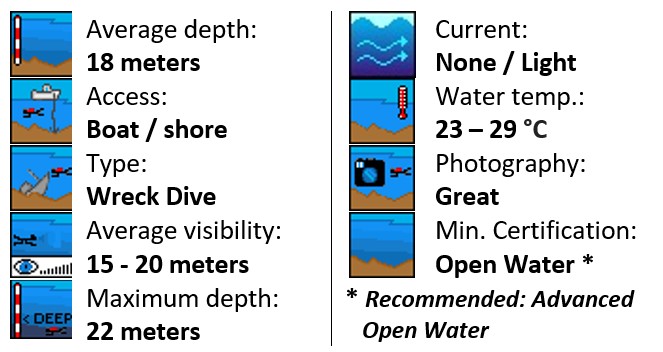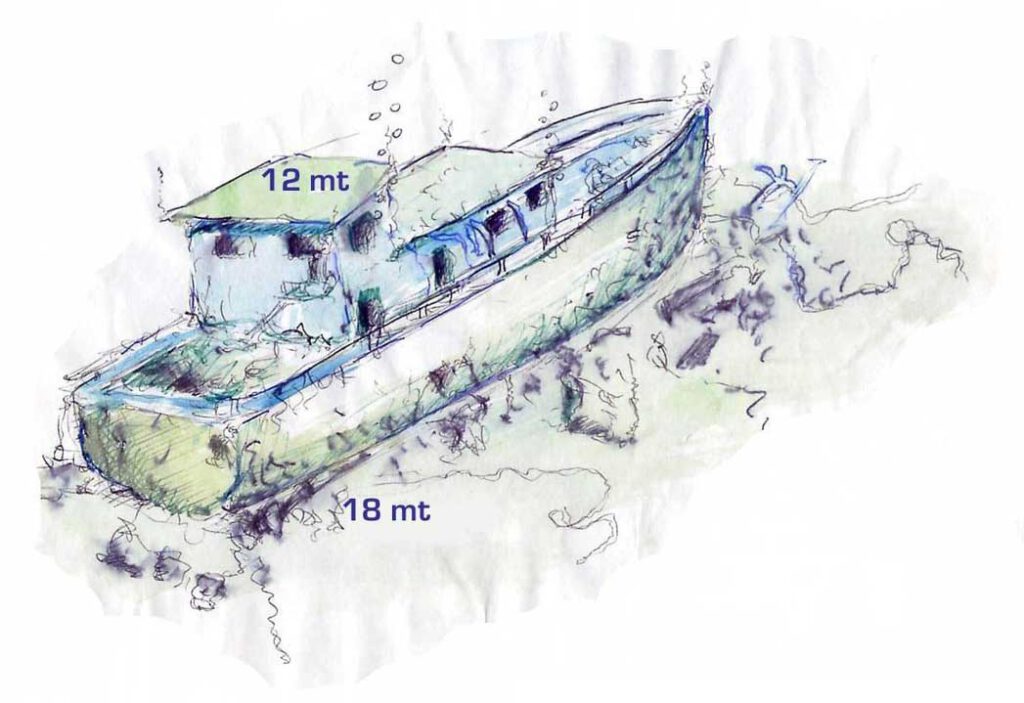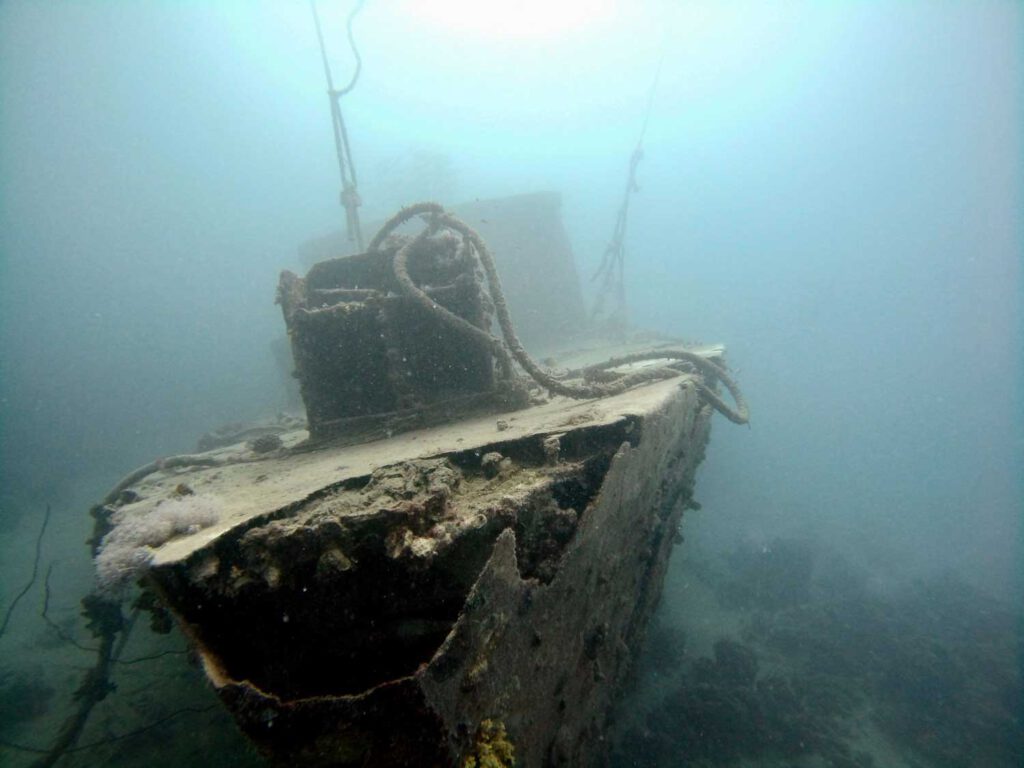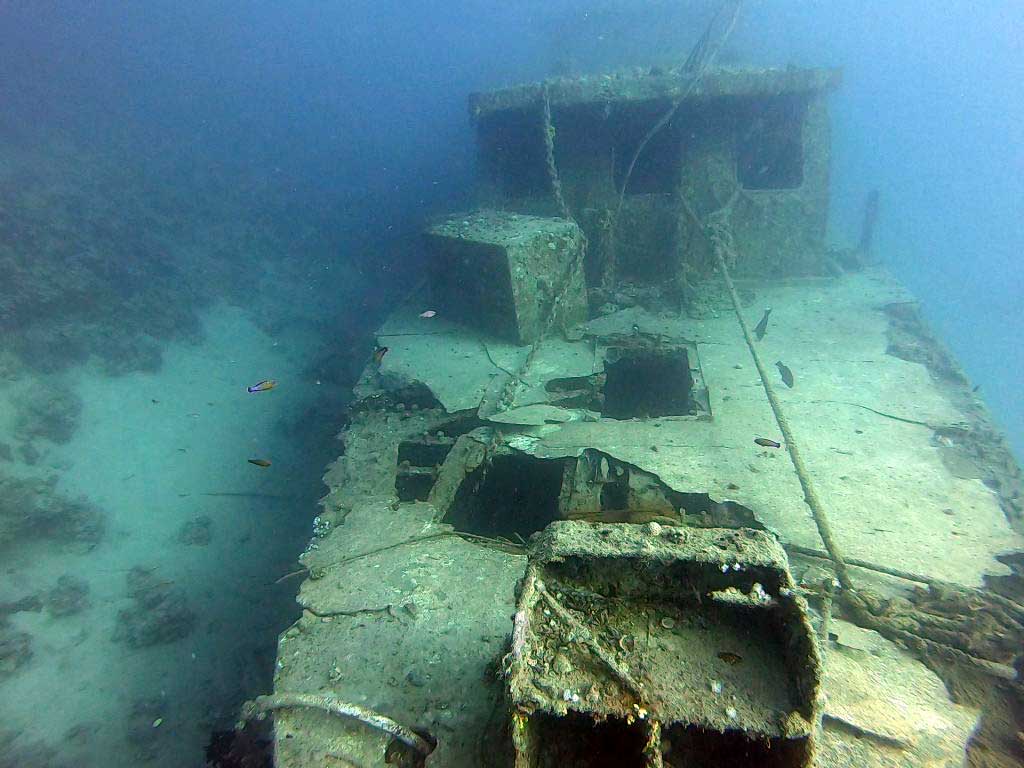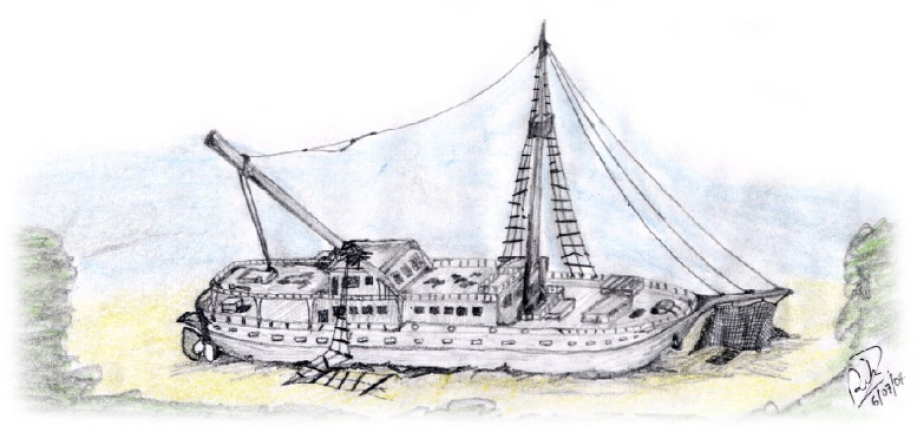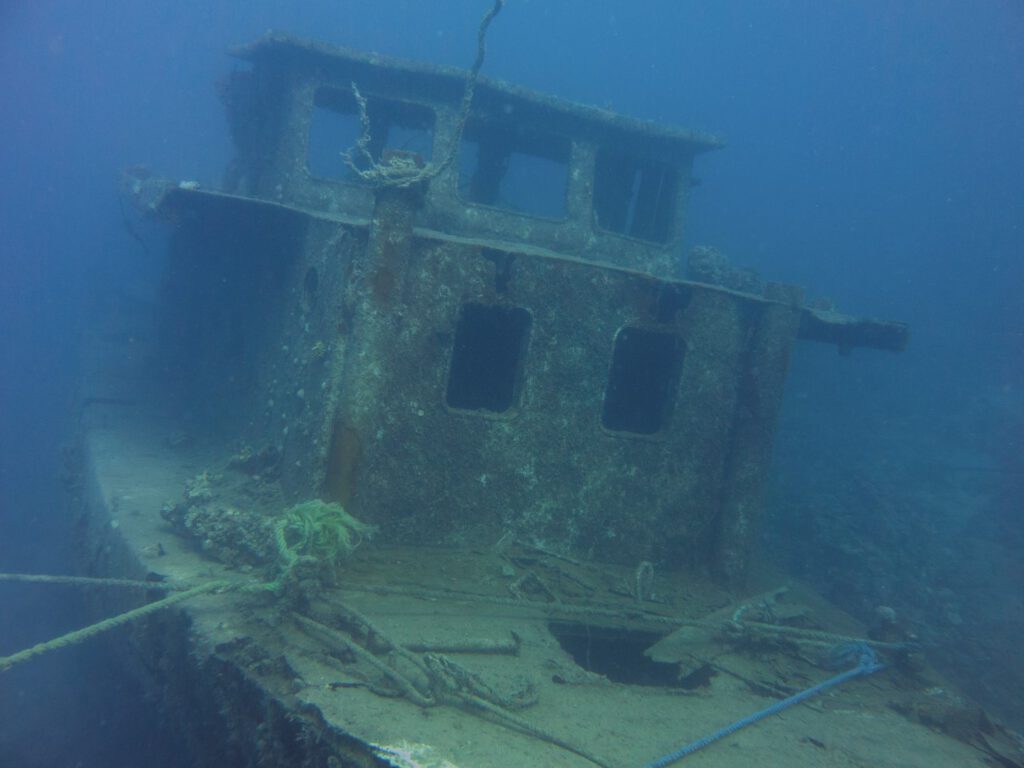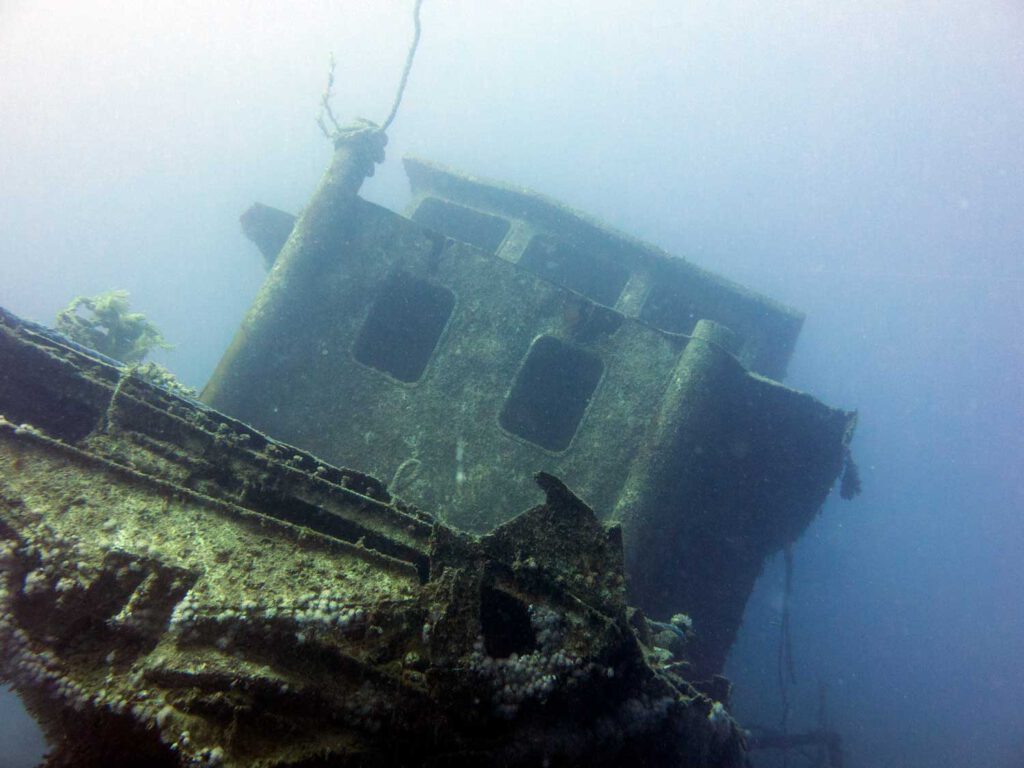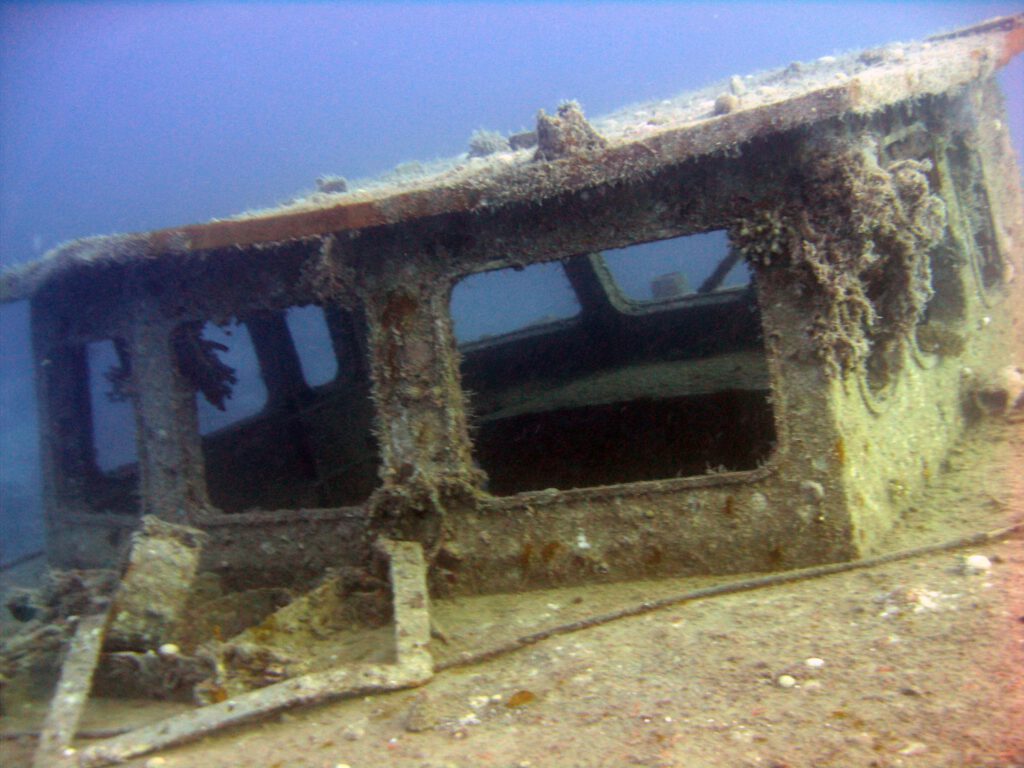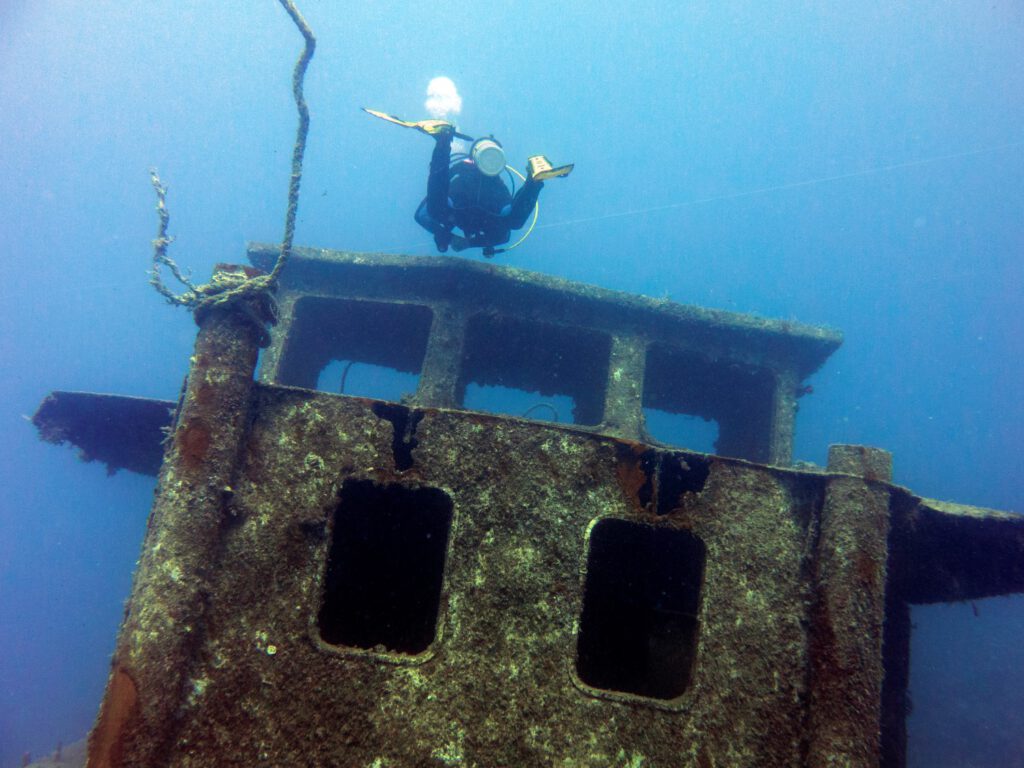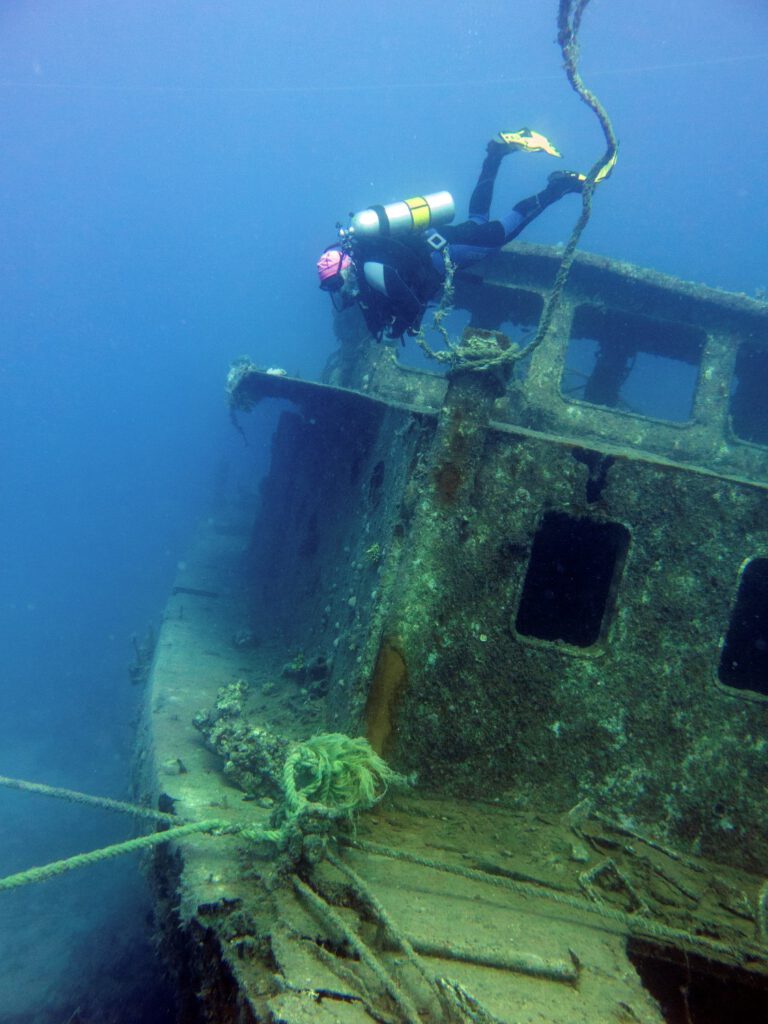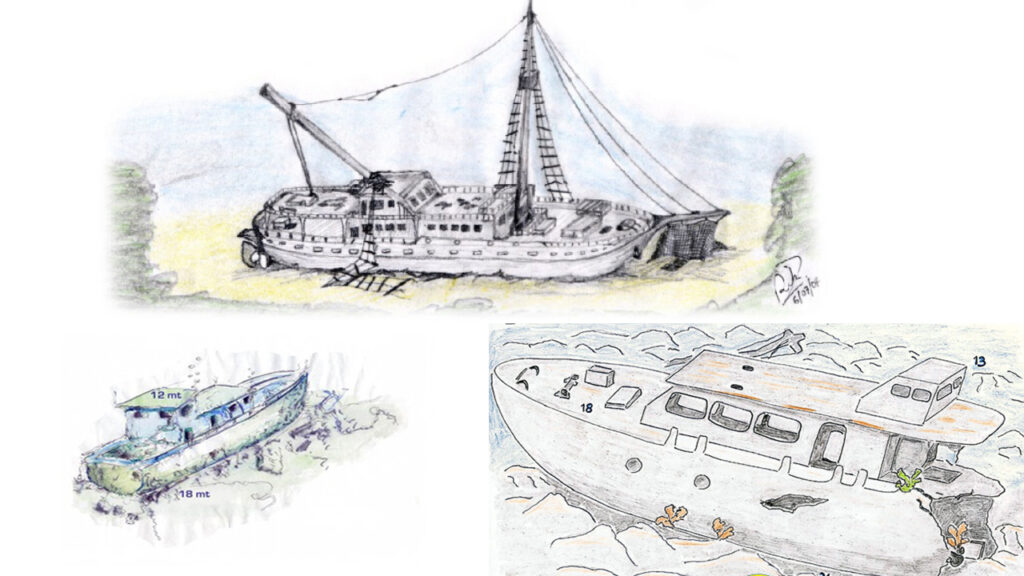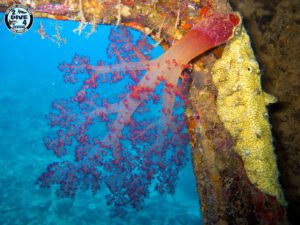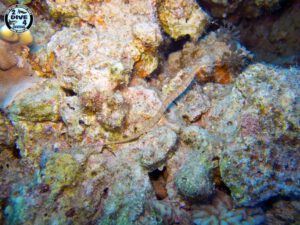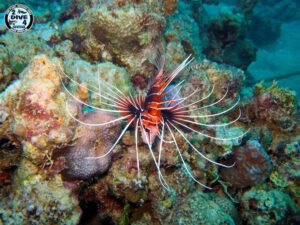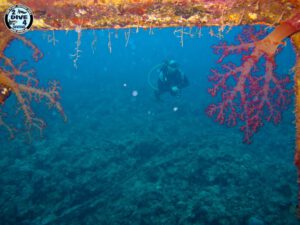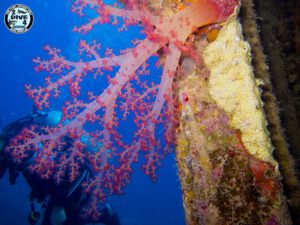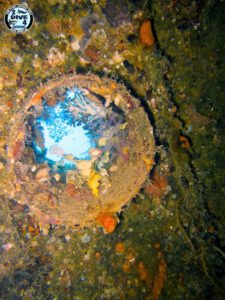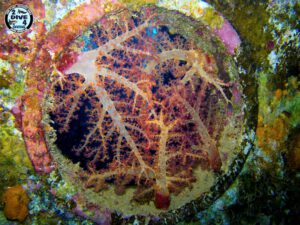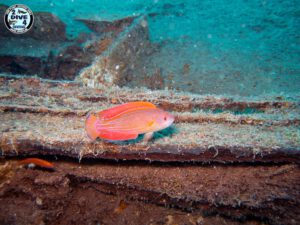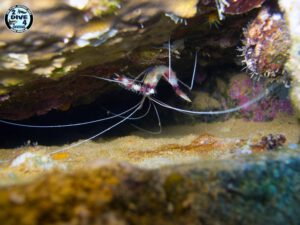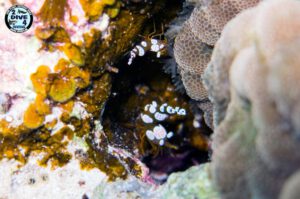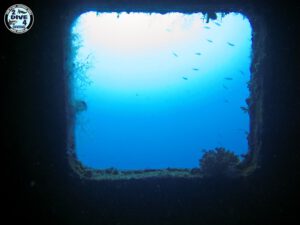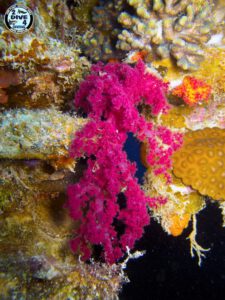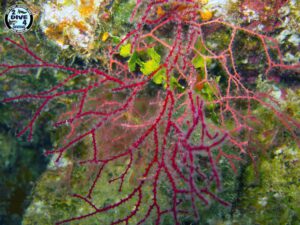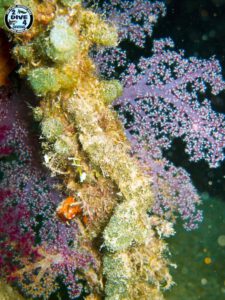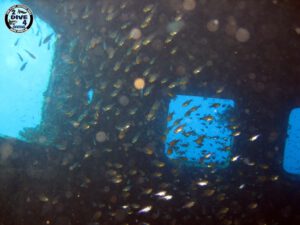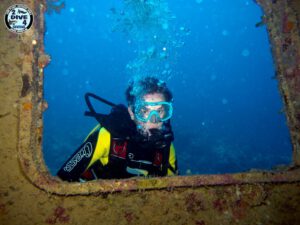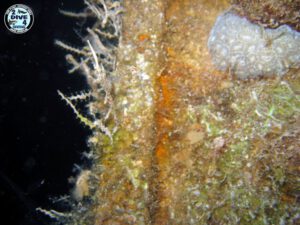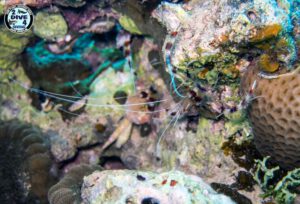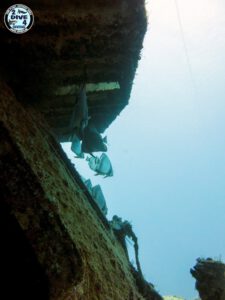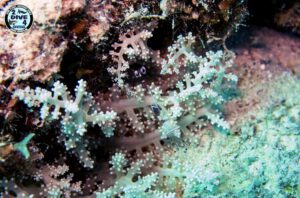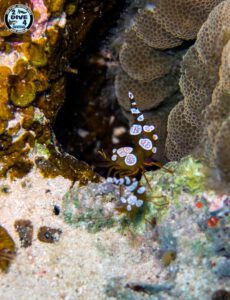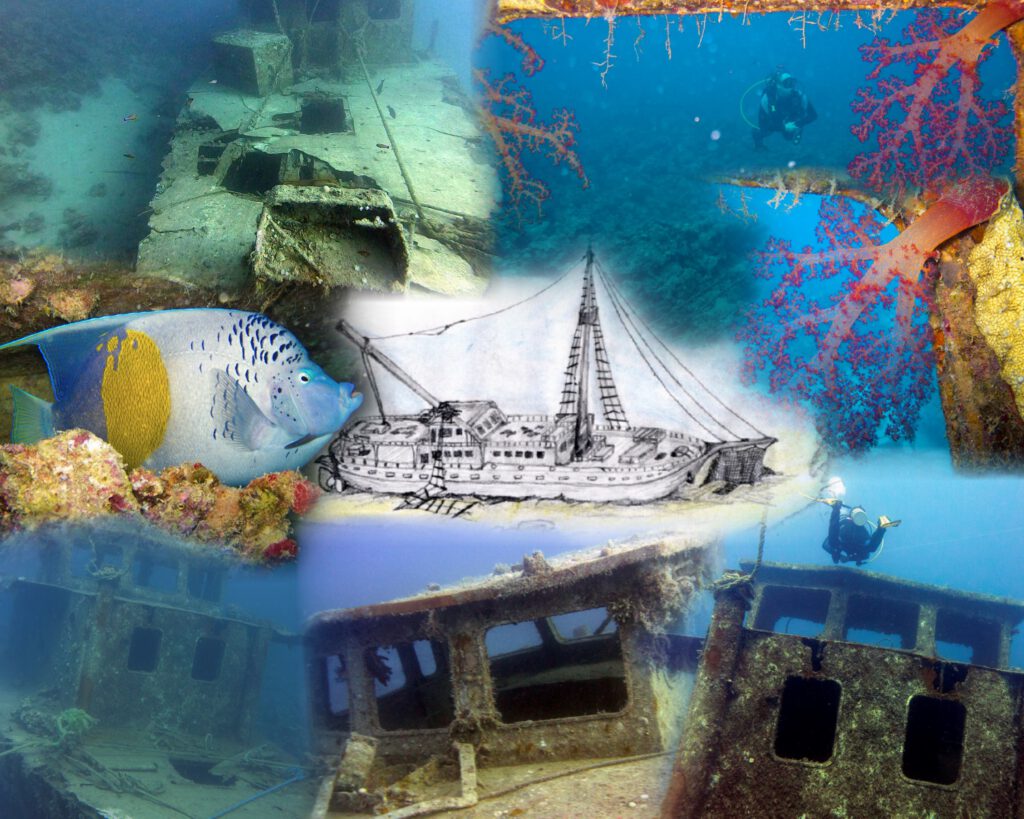Excalibur / Suzanna (Hurghada - Egypt)
This is the wreck of a dive charter vessel, which belonged to the Susanah Diving centre.
The Excalibur was a twin masted motor and sail vessel approximately 22-meters in length and was white and light blue in color with dark blue trim. They say it sank in the harbour of Hurghada in February 1996 as the result of an electrical fire.
It lies close to the shore in 18m depth.
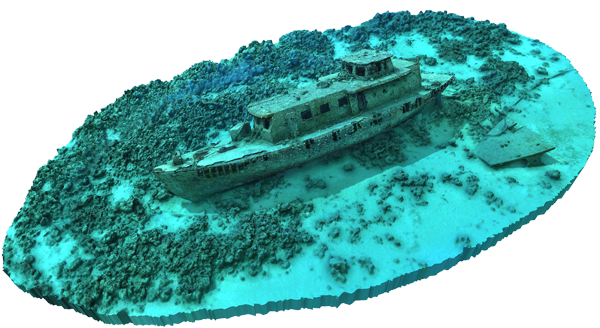
The Excalibur / Suzanna (Hurghada - Egypt)
The Excalibur (or Suzanna) was a live-aboard vessel or safari boat which sank in 1995. The reason for her sinking is not sure but traces of fire have been found.
She lies on her side in a small sand lagoon and has many openings which can be explored. Be careful though as she hasn’t found her final resting place yet.
Unfortunately, the mast with all its fitting rests on the ocean floor as diving boats have struck and damaged it.
She lies only a few hundreds meter from Ramoza beach and can be dived by boat as well as from the beach.
She is a very young wreck but the coverage of soft coral has already begun.
Many glassfish and lionfish swim around the wreck and they say it is one of the rare places where seahorses can be found in Hurghada.
NOTE: We make use of “Sketchfab” click HERE to view the navigation controls
Click on the 3D model below to move it around
All credits to the above Photogrammetry model goes out to Holger Buss
The story & the dive
The data
- Name: The Excalibur / Suzanna
- Description: Twin mast motor and sail vessel
- Length: 22 meter
- Depth: Max. 22 meter
- Visibility: 10 – 20 metres
- Location: Only a few hundred meters off shore. In front of the “Caribian bar” at the “Bella Vista resort”
- Access: By boat or from the beach.
The story
Unfortunately, not much is known about this wreck.
The Excalibur was a beautiful twin mast motor and sail vessel, around 22m in length and originally finished in white and light blue, with dark blue framing. As far as I can tell she sank some time between November 1995 and February 1996.
Much mystery surrounds her demise, and over the years, we have heard many different tales about her sinking. What is certain is that she suffered significant fire damage to her main cabin section.
The fact that this damage, although severe, is very centered suggests, almost without doubt, that the fire occurred shortly before she slipped beneath the waves.
But what caused the fire?
Dive guides who often spent time in a coffee shop in Sakalla, visited by many of the dive boat captains, kept a constant ear open for tales of new dive sites or wrecks.
After first discovering the existence of the Excalibur, they set about making enquiries. This was made slightly more difficult by the fact that, at the time, they had no idea what the name of the wreck was.
One of the first stories they heard – and one that has prevailed over the years – is that the vessel was deliberately set on fire for an insurance claim.
They also heard stories that the sinking was the result of a messy divorce, in which one half of a couple set the boat alight to prevent the other from taking it as part of the settlement.
There was even a story that an Egyptian crew member was killed in the blaze, although this highly unlikely in the absence of any further reports supporting it.
The tales range from a simple electrical fire that started while the owners were ashore enjoying a sunset meal to elaborate stories of deceit and subterfuge.
However, we must stress that this is all hearsay and rumour, we have never uncovered any evidence to support these claims….
But whatever the cause of her sinking, the loss is a divers gain.
Excalibur, Fatota or Suzanna......
This wreck is also known as the Susanna, a name given to her by the diver, author, and photographer Rik Vercoe in 1996 who also made a drawing of the vessel as it was then.
Rik Vercoe’s story:
“I first got the chance to look for the unknown second harbour wreck. I had been chatting to the boat captain who told me that a vessel had recently sunk to the south of the El Mina.
As luck would have it a small green fishing boat (common to those parts in those days and around 3 metres in length) tied up to the back of our dive boat during our surface interval.
The fishing boat was called the “Fatota”. After a chat with the fisherman, he confirmed the captain’s story and better still agreed to ferry me in full dive gear over to the area for a short search.
Even in the calm conditions it was quite a rocky ride balancing on what amounted to no more than a kayak.
At 1.06pm on April 25th 1996, not only did the fisherman drop me in the right area, he dropped me bang on the stern of the wreck (no more than 50m from the shoreline).
What greeted me below the waves was a beautiful, almost totally intact, luxury sailboat, complete with twin masts, rigging and bowsprit with bow net rigging still in place.
Diving totally alone on the wreck was like something out of a pirate movie and it was easy to imagine her as a sunken galleon involved in swashbuckling adventure, pirates pacing her decks and a secret treasure chest buried in her keel.
I would love to entertain the notion that I was the first to dive her after her sinking, however the tell-tell extra bits of orange rope which had been tied and then cut from her mast tops, suggested I was certainly not the first here.
With no idea of her identity, and for logbook purposes I named her “The Suzanna” (to this day I have no idea why) and only much later discovered her true name to be “The Excalibur”. In the subsequent months I never tied a single rope to the vessel, insisting our dive boat moored off the wreck to preserve her If only others had been so careful.
I returned to The Excalibur (or Suzanna, as I still like to call her) nearly seven years after her sinking and was dismayed to find both her masts had been pulled from her, almost all the rigging is now on the sea floor and the bowsprit netting is gone.
Despite her condition she still sits upright and proud, the fire damage in her main cabin area apparent to all, the flames now replaced with thousands of glassfish and the occasional lionfish.
I had a wonderful first dive on the Excalibur back in 1996 and returned just over an hour later to share the experience with the divers on my boat.
Later that day I put pencil to paper and drew a picture of this lovely site. Whilst hardly doing her justice I re-drew my original picture recently and elected to draw her as she was then rather than how she now appears (see map attached here on dive site directory).
Although now inaccurate I hope other divers will picture her this way and be reminded that caring for these precious wrecks preserves them for others to be inspired by, as I was when we first met.”
The dive
The Excalibur now rests upright (with a slight lean towards her starboard side) in a small sand lagoon in 22 metres of water. Coral boulders surround the lagoon perimeter making for a surreal setting.
The Excalibur provides a wonderful second or third dive of the day.
Her main mast used to be visible from the surface starting at 4m. however it’s now laying next to the wreck.
However a part of the boat’s bowsprit is still in place on the bow and many deck fittings and rails are still present.
Penetration of the wreck can be made into the wheelhouse and some of the accommodation areas.
However, some people do not recommend enterning the wreck as everything can be view through the windows and ports.
The maximum depth is proximity 22meter and close to shore.
The wreck is located near shore and can even be reached by a (bit of a long) surface swim.
Photo impression flora & fauna
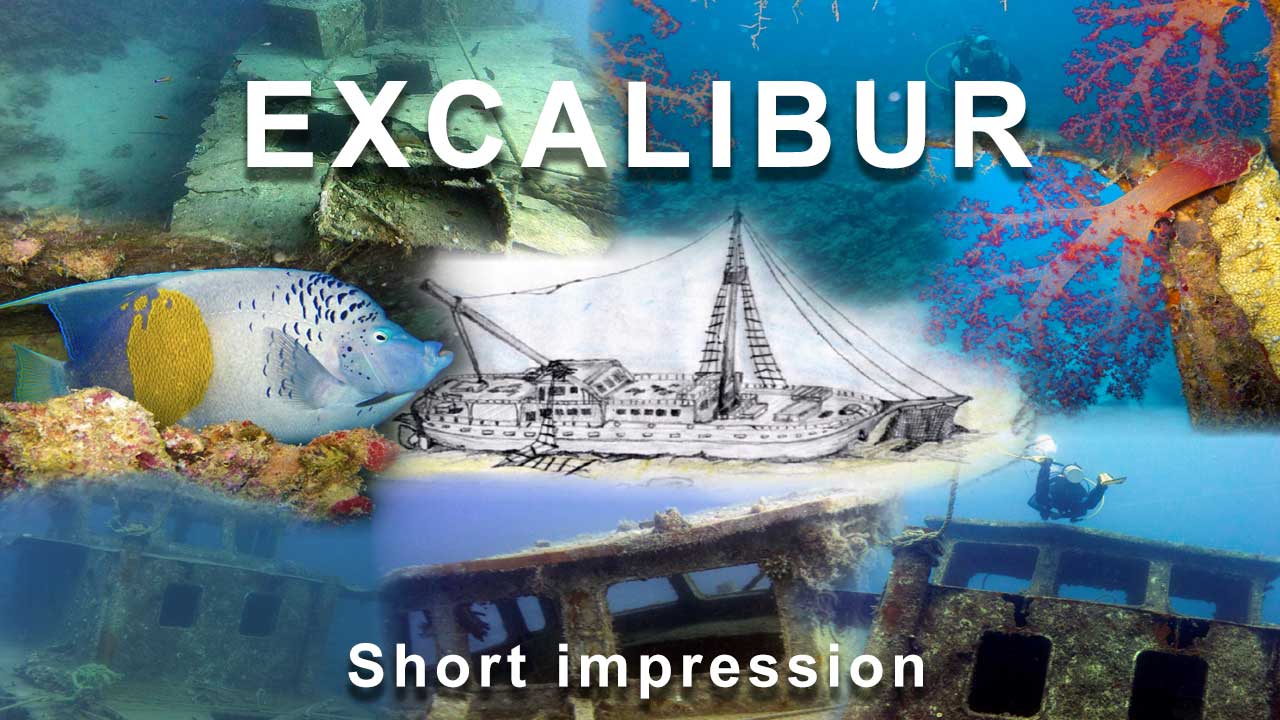
Short impression of diving the Excalibur (Click to start video)
Conclusion
The Excalibur is an iconic diving site.
It’s extraordinary attraction for both novice and experienced divers.
It has become an artificial reef, teeming with vibrant marine life.
As you descend into the depths, you will be greeted by schools of colorful fish darting around the rusting remains of the ship, creating an enchanting spectacle that showcases the beauty of underwater ecosystems.
Photographers will find ample opportunities to capture stunning underwater shots, as the play of light and shadows against the wreckage creates a mesmerizing atmosphere.
The wreck has been colonised by glassfish, lionfish, barracuda, shrimps and among others. The Excalibur lies close to shore, so you could jokingly call it a kind of house reef.
Because the wreck is relatively shallow it is accessible to all divers.
